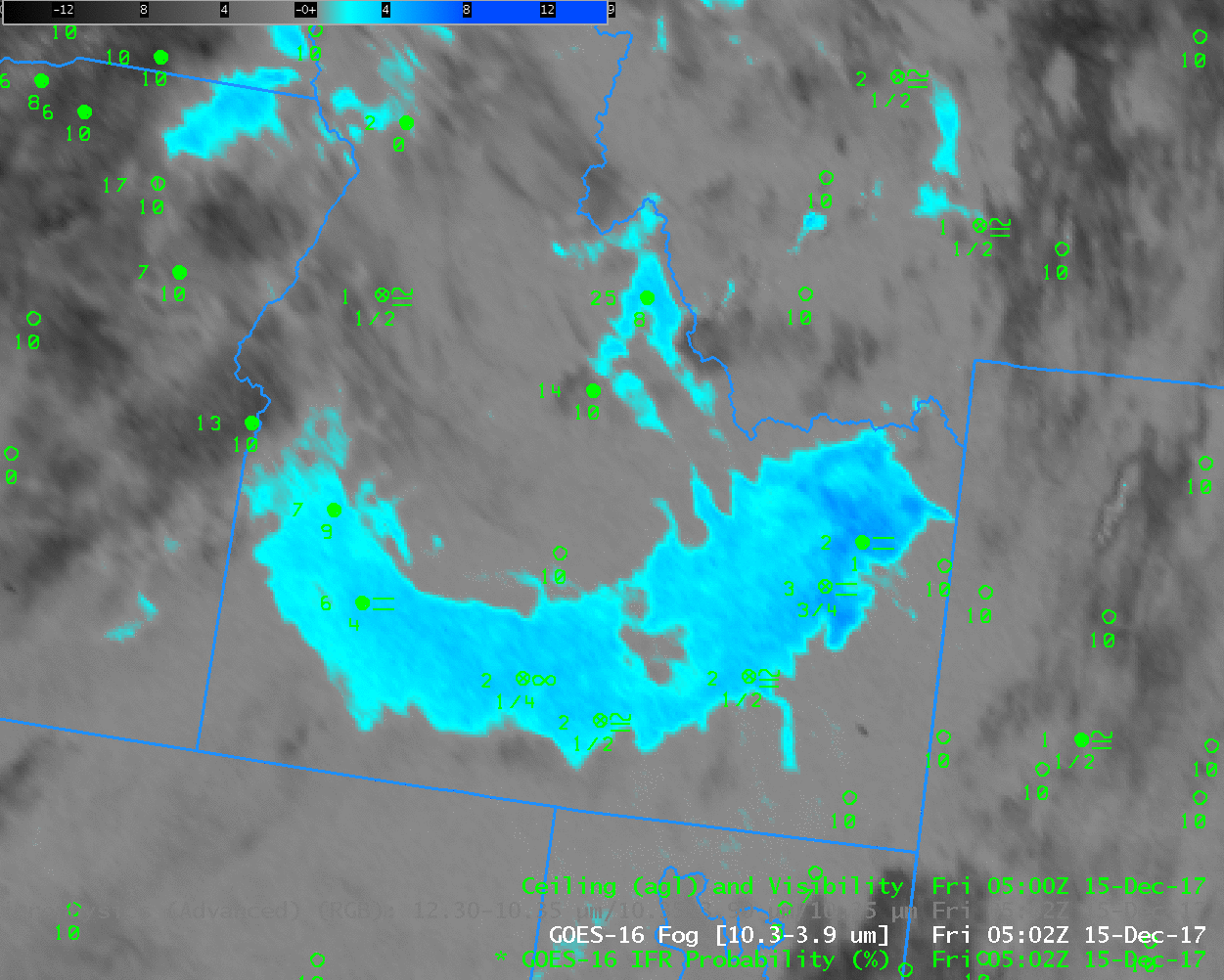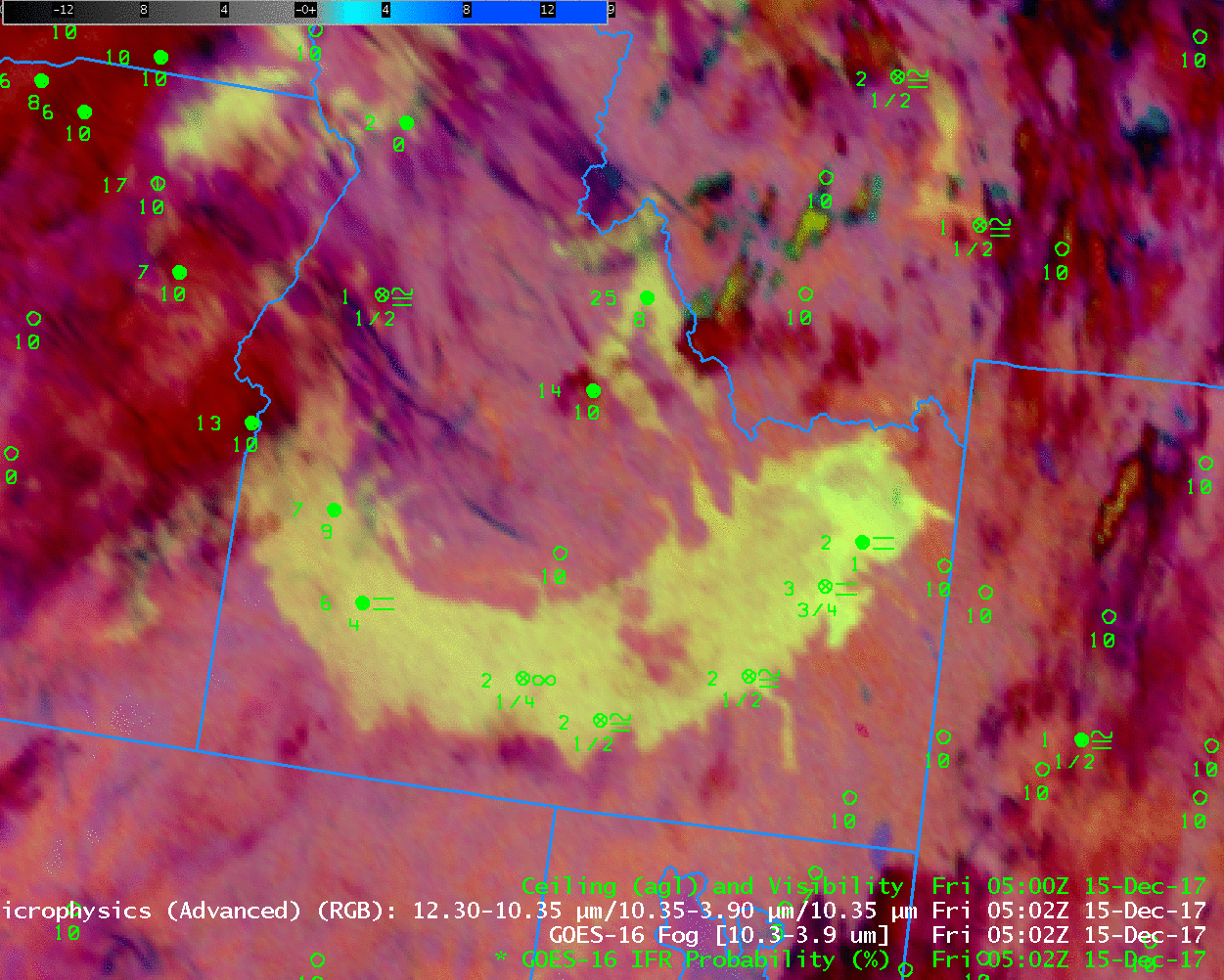GOES-16 data posted on this page are preliminary, non-operational and are undergoing testing
GOES-16 is now in the operational GOES-East position (but not, yet, technically operational) and GOES-16 data started flowing shortly after 1500 UTC on Thursday 14 December. GOES-16 produces excellent imagery over the western United States despite the satellite’s station at 75.2 West Longitude. The animation above shows GOES-16 IFR Probability fields over Idaho, with large values over the Snake River; High Pressure over the region has capped moisture (and pollutants) in the valley, and reduced visibilities are a result. (Click here for the Boise Sounding from 0000 UTC on 15 December from this site) The Pocatello Idaho Forecast Office of the NWS issued (at bottom) Dense Fog Advisories that were valid in the morning of 15 December 2017.
The excellent temporal resolution allows for close monitoring of the eastern edge of the region of fog, expanding eastward from the Snake River Valley into Wyoming and Montana.
The animation above shows consistent GOES-16 IFR Probabilities over the Snake River, and observations of low ceilings and reduced visibilities. Note that over the eastern part of the Valley, from Pocatello to Idaho Falls and Rexburg, the character of the IFR Probability field at times loses all pixelation. During this time (around 1000 UTC), model data (in the form of low-level saturation in the Rapid Refresh Model) are contributing to the IFR Probability Field, but satellite data are not because of high-level cirrus. The animation, below, of the Nighttime Fog Brightness Temperature Difference (10.3 µm – 3.9 µm), confirms the presence of cirrus (they appear grey/black in the color enhancement). It also suggests why that field alone rather than a fused field such as GOES-R IFR Probability can struggle to detect fog in regions of cirrus.

GOES-16 Brightness Temperature Difference Field (10.3 µm – 3.9 µm), 0502-1302 UTC on 15 December 2017 (Click to animate)
Products that use only satellite data, such as the Brightness Temperature Difference field, above, or the Advanced Nighttime Microphysics RGB Product, below, that uses the (10.3 µm – 3.9 µm) Brightness Temperature Difference field as the ‘Green’ component, will always struggle to detect fog in regions of cirrus. Of course, the superb temporal resolution of GOES-16 mitigates that effect, as in this case; it’s obvious in this animation what is going on: a band of cirrus is moving over the fog, but it not likely affecting it. A single snapshot of the scene, however, might not impart the true character of surface conditions.



